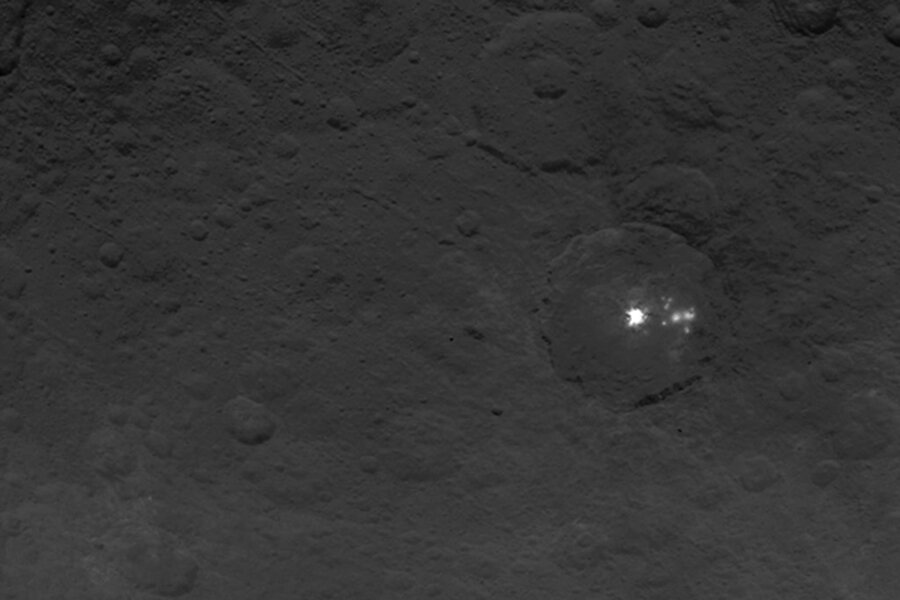NASA probe of Ceres' mysterious spots reveals 'pyramid-shaped peak'
Loading...
The dwarf planet Ceres continues to surprise and confound scientists.
New images from NASA’s Dawn spacecraft provide more clues about the distant planet’s peculiar bright spots, but they also reveal what appear to be new geological characteristics: in particular, a pyramid-shaped peak jutting out over a relatively flat landscape, the space agency reported Monday.
“The surface of Ceres has revealed many interesting and unique features,” Carol Raymond, deputy principal investigator for the Dawn mission, said in a statement. “For example, icy moons in the outer solar system have craters with central pits, but on Ceres central pits in large craters are much more common. These and other features will allow us to understand the inner structure of Ceres that we cannot sense directly.”
Dawn, which launched from Earth in September 2007, has been tasked to investigate the two most massive bodies in the asteroid belt between Mars and Jupiter. The probe entered orbit around Ceres, the largest object in the belt, on March 6, and has since been studying the dwarf planet in detail.
The latest images, taken from about 2,700 miles above Ceres, provide a new view of the planet’s mysterious bright spots – located in a crater about 55 miles across – about which scientists have speculated over the last two months.
“The bright spots in this configuration make Ceres unique from anything we’ve seen before in the solar system. The science team is working to understand their source,” Dawn principal investigator Chris Russell of the University of California, Los Angeles said in a statement last week. “Reflection from ice is the leading candidate in my mind, but the team continues to consider alternate possibilities, such as salt.”
Dawn’s visible and infrared mapping spectrometer helps scientists identify specific minerals present on Ceres based how they reflect light: Each mineral reflects wavelengths in a different way, giving each a unique signature that scientists can recognize.
At least eight spots are visible next to the largest bright area, which is about 6 miles wide, according to estimates.
The new images also reveal a mountain about 3 miles high, towering over a smooth area on the planet’s surface, in addition to the variety of craters that scientists have already identified.
Dawn is the first mission to visit a dwarf planet, and the first to orbit two distinct targets in our solar system: it studied the protoplanet Vesta for 14 months in 2011 and 2012.
The mission will remain in its current altitude until June 30, when it will move into its next orbit at an altitude of 900 miles.






